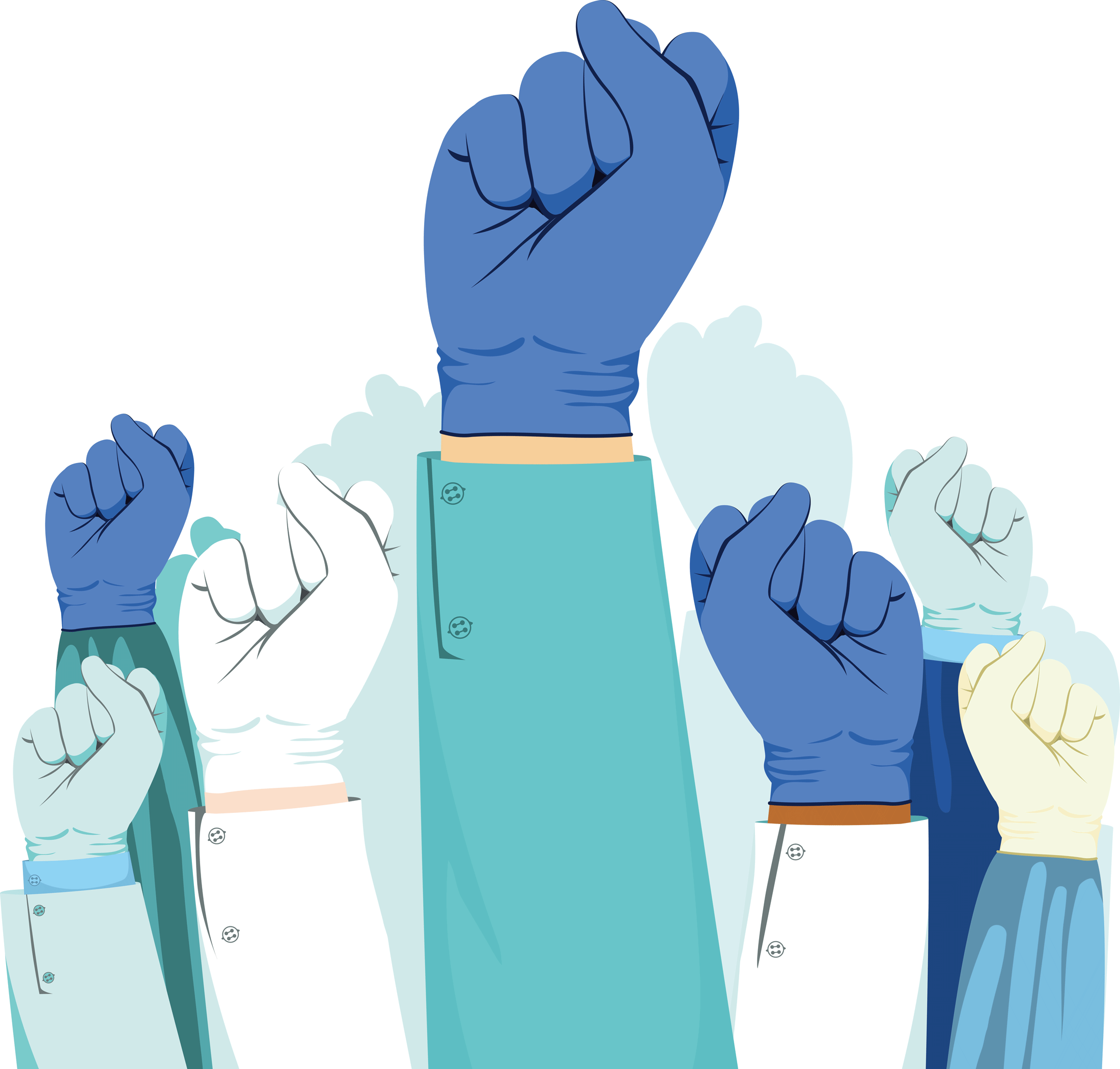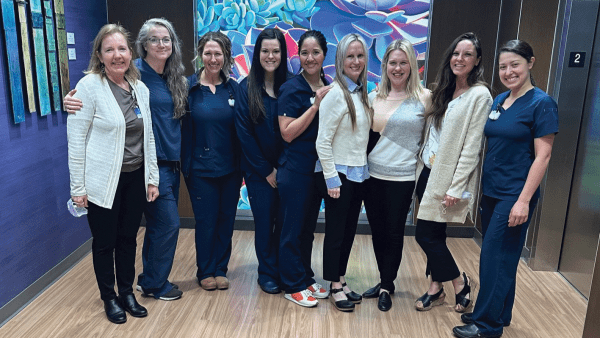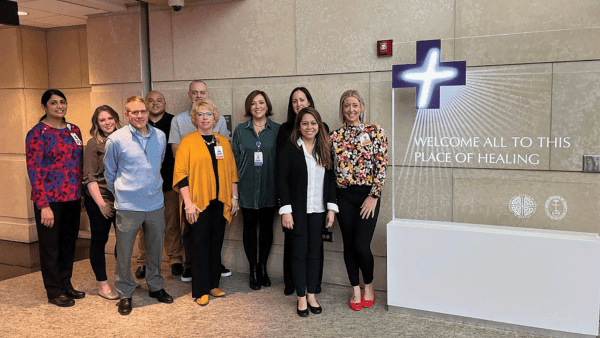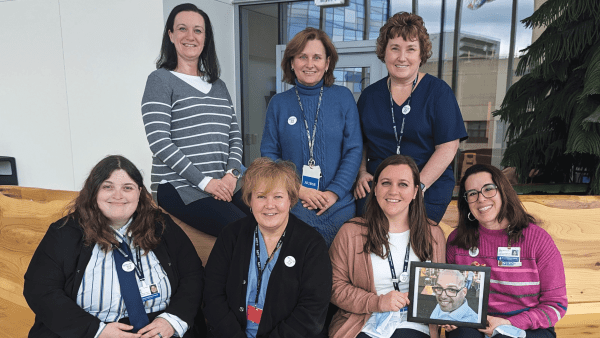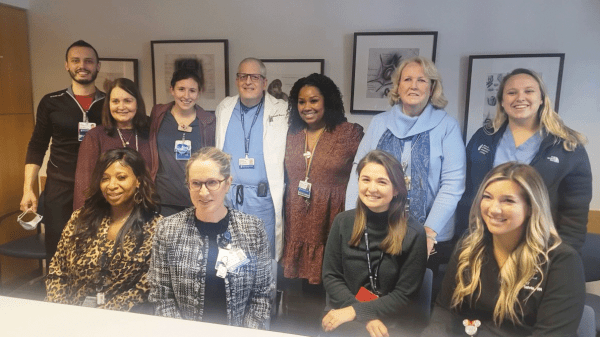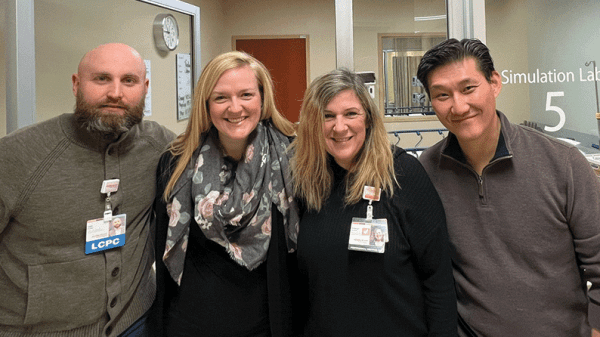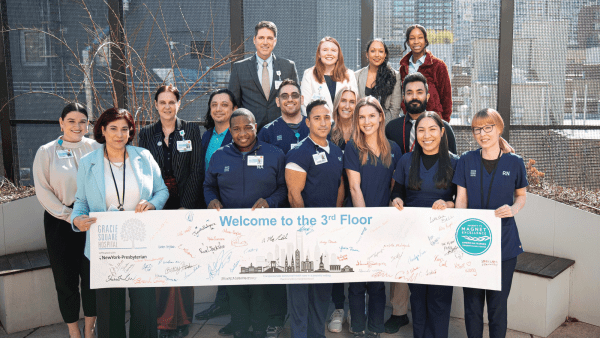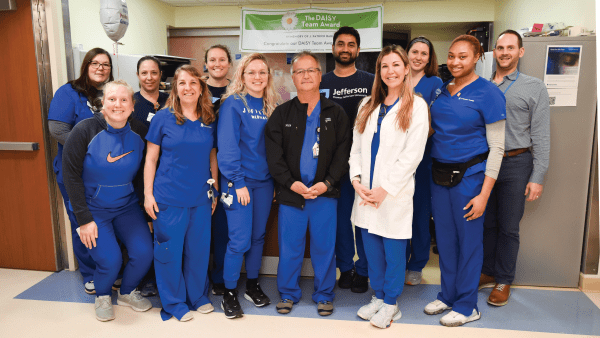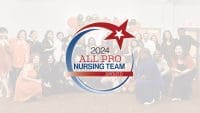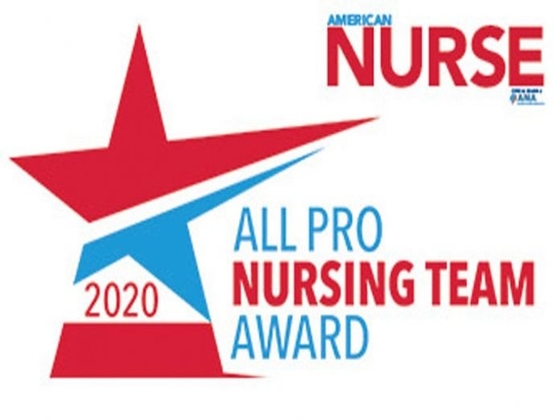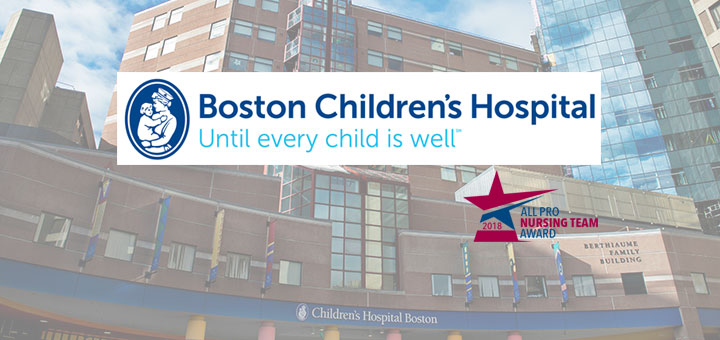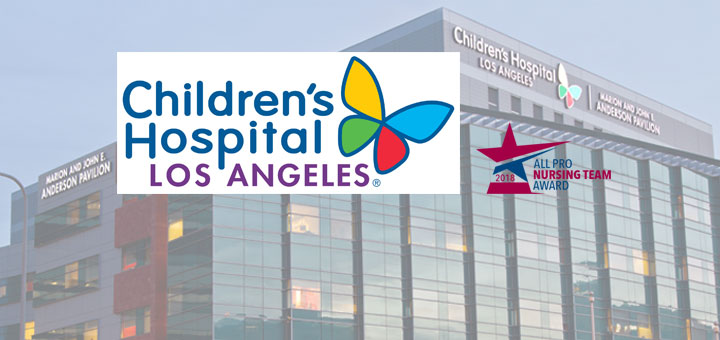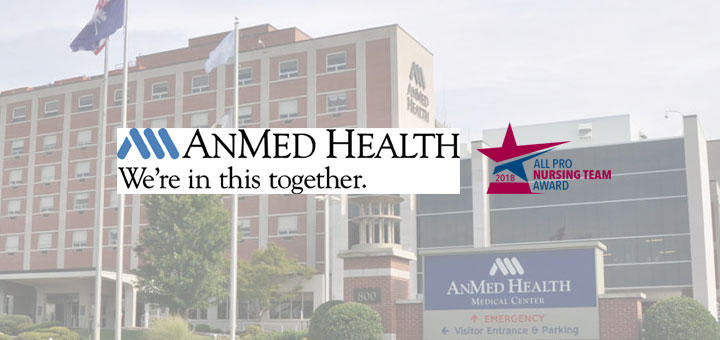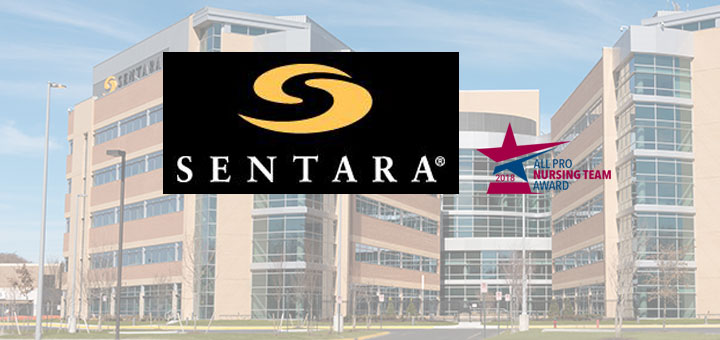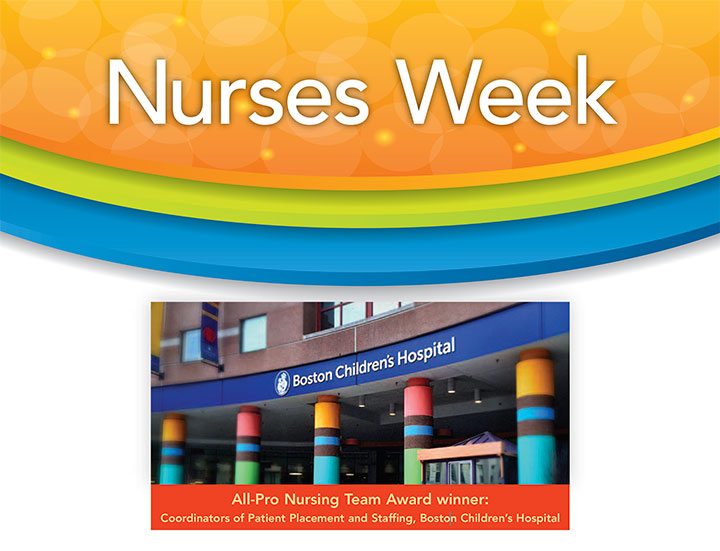The past 3 years have presented unexpected challenges to the nursing profession. Throughout it all, nurses have risen to the occasion, but they require the support of their leadership teams and their communities. Without that support, nurses will continue to suffer burnout, post-traumatic stress disorder, and moral distress. And they will continue to leave the profession.
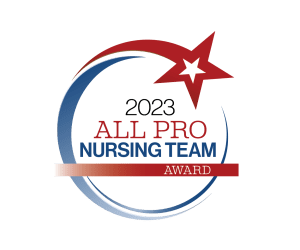

The team at American Nurse Journal thanks all of the teams that submitted applications. We know you took time out of your very busy lives to share your stories. The decision in choosing the final winners was a tough one because all of the entries presented examples of evidence-based care provided within a supportive work environment. You all deserve congratulations and recognition.
To the final winners, we offer our sincere appreciation for the work you do and a round of applause for going above and beyond to support your patients and each other.
WINNER
Boston Children’s Hospital HART Program






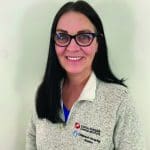



Nurses and other healthcare workers across the country are experiencing high levels of stress and burnout. To address this issue on pediatric units at Boston Children’s Hospital that face especially high levels of stress, four nurses formed the Hematology/Oncology/Stem Cell Transplant Advancing Resiliency Team (HART). Before creating the team, the nurses researched the issue and then worked to develop programs beneficial to all interprofessional staff. Here’s their story in their own words:
Caring for pediatric patients on hematology, oncology, and hematopoietic stem cell transplant units is taxing on the interdisciplinary team. High levels of repeated workplace stress lead to burnout, compassion fatigue, post-traumatic stress disorder, and moral distress in healthcare workers. Perceived stress is a strong predictor of general health, the number of unhealthy days, and the rating of the work environment. Stress also has been implicated as a contributing factor to poor communication and compromised teamwork, a leading cause of sentinel events. Peer support reduces isolation, increases connection, builds cohesion, and instills hope in staff. Skill set requirements, limited resources, interpersonal relationships, and patient safety concerns increase the complexity of the staff.
We developed the HART Program in November of 2019 with a vision of shifting from moral distress to moral resiliency. We wanted to create a sustainable peer-to-peer, on-site support program for the unit’s interprofessional staff and a healthier workplace culture by improving teamwork, raising morale, helping each staff member feel supported and heard, enhancing the well-being of each person, and fostering a culture of resiliency within the units. Since its inception, this program has been fully donor-funded.
HART, a nurse-driven program, provides a nurse coach 3 days per week (covering both day and night shifts), 8 hours a day to support staff through morally and ethically challenging situations. The on-site dedicated space for the program sits between our two units, but coaches also encounter staff when rounding throughout the units. HART offers integrative therapy, including reiki, relaxation massage, guided imagery, aromatherapy, and music. In addition, it provides one-to-one conversations, group conversations, and educational opportunities. HART extends hospital-wide resources to our staff and most of all a safe space without judgment.
We collect data using Research Electronic Data Capture for each encounter and a sum of the day’s encounters. A staff member may visit a coach with concerns about an end-of-life patient, a patient situation that triggers hardship for the staff member, a peer-to-peer challenge, or an interdisciplinary communication breakdown. Ultimately, the coach is a sounding board who offers support.
Three most utilized hospital resources since the initiation of the HART:
2020
KGA mental health services = 38%
Staff support = 26%
Ethics sounds = 3%
2021
Staff support = 42.1%
Ethics rounds = 36.8%
Office of clinician support = 15.8%
2022
Program staff support = 42.1%
Ethics rounds = 36.8%
Office of clinician support = 15.8%
Three top HART interventions staff found most helpful:
For all 3 years: one-on-one conversations, tea/coffee cart, and reiki
The HART coach addressed an issue that was important to me:
2020 and 2021
Strongly agree = 21%
Agree = 61.9%
Undecided = 15.4%
Disagree = 1.58%
2022
Strongly Agree = 61%
Agree = 24.5%
Undecided = 12.2%
Disagree = 2%
FIRST Runner-Up
Mayo Clinic Hospital Intensive Care Wounding Team
Incorporating the Magnet® nursing culture, a nurse-led team at the Mayo Clinic Hospital in Cave Creek, AZ, was developed to address an increase in hospital-acquired pressure injuries (HAPIs) by rounding in the intensive care unit (ICU). The team calls this strategy “wounding.” Nurses on the team identified knowledge gaps for HAPI prevention and a lack of confidence among clinical nurses in prioritizing and selecting appropriate interventions. The team addressed these gaps using peer-to-peer feedback and innovative education with unit-specific case studies to increase staff awareness. Wounding empowered clinical nurses to practice autonomously by creating a safe environment to promote positive patient outcomes.
The HAPI incidence rate for the 12-month period prior to wounding implementation was above the accepted national benchmark. Wounding team rounds launched in September 2020 and a decline in overall HAPI rates were realized. The 2021 HAPI rate decreased by 49.8% from the previous year. In 2022, HAPI rates showed a further decrease of 7.4%. The data demonstrate the effects on patient outcomes while promoting nursing autonomy in prioritizing skin care in daily nursing practice.
The database continues to help the team identify improvement opportunities and assists with program sustainability. Based on national HAPI cost estimates, a savings of approximately $7.6 million has been obtained since wounding implementation.
SECOND Runner-Up
Advocate Aurora Condell Medical Center Chasing Zero CAUTI Team
In the fourth quarter of 2020, Advocate Aurora Condell Medical Center (ACMC), in Libertyville, IL, identified an increase in hospital acquired catheter-associated urinary tract infections (CAUTIs). As a result, the organization set a goal of zero CAUTIs for all inpatient units, including the ICU. ACMC multidisciplinary Health Outcomes Committee, with a focus group committed to CAUTI prevention, developed a project to design and implement a High-Risk Huddle (HRH) process for determining appropriate Foley catheter use and urine culture stewardship.
The team targeted education to all charge nurses, who served as nurse champions in the early phases of this project. Understanding the time constraints of bedside nurses, the team offered multiple 1-hour in-person and remote educational HRH sessions. Simultaneously, a daily Foley Huddle was implemented every morning with all inpatient unit managers to report out patients with a Foley and any cultures that had been sent. HRH compliance was included in the Daily Huddle, including validation of the escalation process when necessary. Monitoring occurred continuously throughout implementation.
The outcomes of this project included a 90% decrease in CAUTIs and a steady reduction in non-ICU catheter device days. Overall, the dramatic improvement in these measurable data points demonstrates that using a multidisciplinary team approach and collaboration among key stakeholders can lead to quality improvement in nurse sensitive indicators such as decreasing CAUTI events, which improves the quality of care provided to all patients.
THIRD Runner-Up
Boston Children’s Hospital Small Talk Podcast Team
IIn the fall of 2019, a pediatric nurse at Boston Children’s Hospital (BCH) wanted to create a podcast for pediatric nurses—by pediatric nurses—to discuss clinical pathways, difficult diagnoses, and nursing pearls. She reached out to the innovation specialist and a nursing colleague to explore this opportunity. Calling themselves the “Small Talk Podcast Team” seemed appropriate since pediatrics is their specialty. With the support of leadership, they began recording in a soundproof room tucked away in the basement of the hospital.
Using sound design, the team edits each podcast to capture organic conversations with professional audio results. The team soon realized that the podcast was far more interesting when they explored nursing and interprofessional colleague experiences. The podcast focus shifted from clinical pathway discussions to conversations about the work and experiences of the BCH community. Conversations and storytelling help break down barriers as listeners learn about their colleagues’ experiences and genuine motivations.
Soon, colleagues from other areas of the hospital asked to join the team, and the initial trio grew to a team of ten. They developed a charter, team roles and responsibilities, brainstormed marketing strategies, collected evaluation data, and discussed deliverables and return on investment. They enlisted key leadership as stakeholders, and figured out how to offer continuing education credit to nurse listeners.
The Small Talk Podcast Team created an interprofessional podcast that connects personnel from across BCH to explore topics related to today’s pediatric healthcare climate. This unique and effective tool addresses the educational needs of nurses and makes a positive impact on the healthcare environment.
HONORABLE MENTION
Boston Children’s Hospital Urology Team
Enhanced recovery after surgery (ERAS) protocols optimize perioperative care and recovery. An interdisciplinary team at Boston Children’s Hospital developed and implemented the ERAS bladder exstrophy pathway to benefit children undergoing complete primary repair of bladder exstrophy (CPRE). The team compared patient outcomes with a historical cohort of 30 patients (2013 to 2020). After ERAS–CPRE initiation, all patients were immediately extubated, and 90% received early feeding. The median ICU and overall length of stay (LOS) decreased from 2.5 to 1.0 days and 14.5 to 7.5 days, respectively. After final pathway implementation, no patients required ICU care, and median LOS decreased to 6.5 days. No patient receiving ERAS required escalation to higher level care, and no increase in complications or ED visits occurred within 30 days of surgery. Applying ERAS principles to CPRE can decrease variations in care, improve patient outcomes, and result in effective resource utilization.
HONORABLE MENTION
Elmhurst Hospital BERT Nursing Simulation Team
At Elmhurst Hospital in Elmhurst, IL, and hospitals around the world, workplace violence continues to present a vulnerability for frontline workers. To help staff identify an emergency that may require behavioral intervention, public safety at Edward-Elmhurst Health requested the creation of the Behavioral Emergency Response Team (BERT) code. An educational needs assessment to RNs and patient care technicians identified a need to address workplace violence concerns and help staff confidently administer de-escalation techniques.
The nurse-led team, in collaboration with the workplace violence and public safety expert, medical director for simulation, and employee support coordinator, presents and applies knowledge in action within a safe learning environment. Specific nursing objectives for the BERT simulation include assessing signs of behavioral health need, identifying and applying de-escalation techniques, and knowing how and when to call an alert. A review of all inpatient units shows an increase in alerts initiated by nursing staff from 2021 to 2022.
HONORABLE MENTION
Gracie Square Hospital Dual Focus Program
Gracie Square Hospital (GSH), the only freestanding psychiatric hospital in Manhattan, recently became the third Magnet®-recognized psychiatric facility in the world. The 3rd Floor Unit, also known as the Dual Focus Program (DFP), serves patients with comorbid psychiatric illnesses and substance use disorder.
The DFP, in collaboration with pharmacy, administration, and the unit chief psychiatrist introduced naloxone distribution events. From May 2022 through January 2023, GSH held six community events and distributed 99 kits. Event goals included empowering community members and reducing stigma of substance use and psychiatric disorders. In addition, DFP began giving naloxone intranasal rescue kits to every patient discharged from GSH. By the end of 2022, clinical nurses at GSH provided 753 kits to patients. In addition to making an impact on patients and the community, this project also has increased staff engagement.by nursing staff from 2021 to 2022.
HONORABLE MENTION
Thomas Jefferson University Hospitals MICU Team
The MICU Diary Program, a project implemented by MICU nurses in collaboration with interdisciplinary teams at Thomas Jefferson University Hospitals, aims to decrease the incidence of post intensive care syndrome (PICS) by providing support to at-risk patients and caregivers. Within the evidence-based program, nurses and other healthcare professionals collaborate to address memory loss experienced by patients in the ICU. The program’s success led to the implementation of a post-ICU clinic as part of the Thrive initiative, which significantly decreased the incidence of depression, anxiety, and PTSD.
The interdisciplinary approach and inclusion of a telehealth option have improved patient outcomes by providing flexibility and access to care. The decrease in PICS indicates a positive impact on patients’ mental health and well-being. In addition, the interprofessional approach has improved the work environment via enhanced communication, collaboration, and coordination of care.

